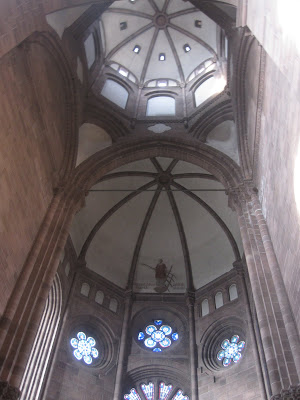The weekend wasn't a waste though. Friday we took care of odds and ends, I finished my online teacher application for DoDDS and made a trip to some schools to drop off a resume. Saturday we took Maddox bowling for the very first time. He absolutely loved it! He was cranky when we walked from the car to the building because it was sunny and hurting his eyes, but as soon as we walked in and he found out he got to wear new shoes he was in a much better mood.
They didn't have bumpers, but they gave him this ramp that they put the ball on and then pushed it down. He would push it down, move to the side to watch it go down the lane, then jump up and down when it hit the pins (I think he just liked the sound his shoes made.)


It didn't take him long to learn that he wasn't supposed to chase the ball down the lane or run up behind daddy while he was in the middle of a roll, he rarely ended up with a gutter ball and bowled a higher score than me on both games.
After the first game we got some beer and pizza.


Sunday we ran more errands and lounged around the house:

Maddox is obsessed with airplanes and anything else that flies:

Monday we took a trip to the Altstadt - Old Town - which is just below the castle.

There is a statue of the Modonna in the Kornmarkt (Corn Market) built in 1718 by the Jesuits, to try to motivate the people of Heidelberg to switch to Catholicism.

This is Marktplazt (Market Square). The Church of the Holy Ghost is in the background and the Herculese Fountain is crowded by tourists (including one looney old man talking loudly and looking lost). The fountain was built between 1706 and 1709 to commemorate how hard it was to rebuild after the destruction of the Thirty Years War.

Since the Middle Ages, this square has been used for public proceedings. But these were not just limited to markets. Witches and heretics were burned at the stake here, and citizens charged with petty crimes served their time hanging in a cage, for all to see and torment.
One of the few buildings to survive the many wars of Germany's past is the Church of the Holy Ghost. And even though the foundation was laid in 1398, it took until 1544 to finish the tower.

The church has been home to Catholics and Protestants throughout the centuries. In 1706 a divider separating the two denominations was put in when both wanted to have services there, and it remained until the 1930’s. The church also has the tombs of the prince and princess elector.

We decided to pay 3 euro to climb to the top of the tower, 204 steps up. That didn't sound like much of a feet at first, but carrying a baby, toddler, and very heavy diaper bag up winding stone staircases turned out to be quite a challege.
This is the little door we had to go through. The ceiling was quite low at times.

There was a landing halfway up that had many sculptures of gargoyles and a beautiful view of the inside.


The view from the top, finally!!

I was way out of breath, dizzy, but releived that the feelings of claustraphobia had finally subsided.

Long way down...
Zum Ritter St. Georg (Ritter Hotel)was built in 1592, and is one of the very few buildings in Heidelberg to have survived the War of the Palatinate Succession

Going down was much easier, even though I was worried about missing a step and falling all the way down while holding Carson. I don't think I'll be climbing any more towers any time soon....
Next we went to the Alte Bruke (Old Bridge - The Carl Theodore Bridge)

Prince Elector Carl Theodor built the bridge in 1786. The twin towers on the city side of the river were once part of the city wall, and contain dungeons used for housing criminals. In the center of these, hanging above the portcullis, is a plaque giving acknowledgment to Austrian troops who helped defend the bridge against a French attack in 1799.

One of the most notable items on the bridge is the statue of a monkey holding a mirror. The legend surrounding this curious statue tells us that it symbolizes the fact that neither the city-dwellers nor the people who lived outside the city were better than the other, and that they should look over their shoulder as they cross the bridge to remember this.


This pilar holds the high water marks from flooding.

On the bridge is a statue of the goddess of wisdom, Pallas Athena:

And also a statue of Carl Theodore, himself:

We stopped at this restaurant to eat. It wasn't busy and they had a menu in English.


Maddox was a pain at first, but once his french fries were served he was a little angel. He is now too sophisticated to eat his french fries with his fingers, he must use a fork. Wait...two forks.




































